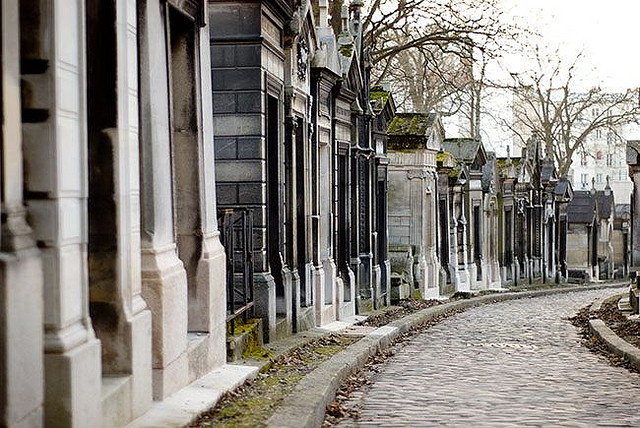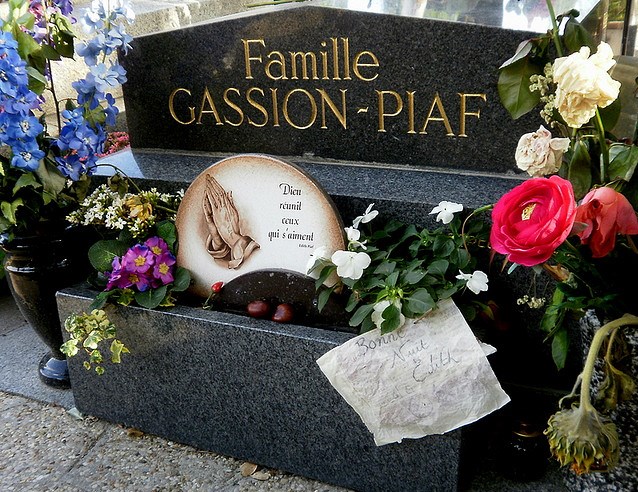Cemetery tourism is another form of tourism. I propose a walk through history in the Père-Lachaise Cemetery in Paris, the most visited cemetery in the world; a visit to the Alma Bridge, where Diana and Dodi Al-Fayet were killed in a traffic accident; and, of course, I recommend you go to the Pantheon of Napoleon.

The Père-Lachaise Cemetery:
In this cemetery in the eastern part of the city lie the mortal remains of writers, artists, painters, actors and politicians from all eras, including Frederic Chopin, Oscar Wilde, Moliére, Honoré de Balzac, Jim Morrison, Maria Callas, etc. They are all part of the history of this country and their tombs are among the most visited in the cemetery. The most popular ones have had a fence or barrier erected around them to keep visitors from spoiling the graves. For example, at the tomb of the celebrated Oscar Wilde it became fashionable to leave lipstick kisses. This was later banned by the express wish of the family, and a glass barrier was placed there to prevent fans from leaving their marks. Or take the grave of Jim Morrison, lead singer of the legendary group The Doors, upon which it was once a ritual for couples to roll around. Since a fence has been erected that makes it impossible to get close, fans now leave behind things he liked (cigarettes, beer, etc.). People began visiting Morrison’s tomb en masse after Oliver Stone made his film about The Doors. On his tombstone one can read the following sentence in Greek “Kata ton daimona eaytoiy” which means “remember the hero driven by his demon.”
The Alma Bridge:
Since August 31, 1997, the day when Diana and her boyfriend Dodi Al-Fayet were killed, this Parisian bridge has been converted into a real sanctuary. The affection people have for the couple has not ceased even with the passing of years. On the bridge, just above the place where they suffered the fatal accident, you will find an eternal flame that has become an unofficial memorial to remember Lady Di, Princess of Wales. The sculpture depicts a giant torch (a replica of the one that the Statue of Liberty in New York City is holding) and although it was first placed there in 1989, it has been filled with flowers, pictures and candles since Diana’s mysterious death. She’s remembered at this point in Paris above the Seine River since it was the exact place of her death. It’s definitely a must-see if you are going to Paris.
The Pantheon of Napoleon:
The remains of Napoleon Bonaparte lie in a privileged place, specifically in the National Residence of the Invalids. There are various theories about his death on May 5, 1821, at just 51 years: due to stomach cancer or poisoned by arsenic. But Napoleon is not alone in Les Invalides. Many other famous French people lend him company: Voltaire, Paul Marat, Marie Curie, Jean Moulin, Emile Zola, Alexandre Dumas and Victor Hugo. They all rest in this vast republican necropolis. In the nineteenth century, before either the Eiffel Tower or the Montparnasse Tower existed, the Pantheon was a mandatory stop because (in addition to the history contained within its walls) it offered the best views of the city of Paris.
Twitter: @DianaRPretel

 English
English Français
Français Deutsch
Deutsch Italiano
Italiano Español
Español